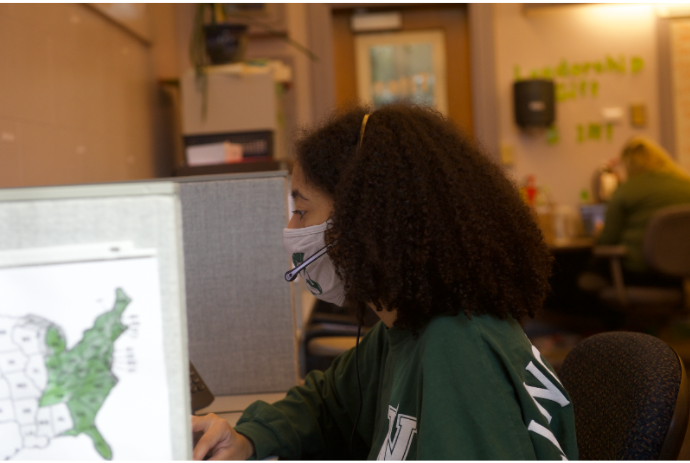
Photo: Illinois Wesleyan University
Illinois Wesleyan strives to have a diverse campus. Students of all socioeconomic backgrounds can attend due to the university’s generous financial aid. However, financial aid is where the attention to all SES (socioeconomic status) stops.
Prior to the COVID-19 pandemic, socioeconomic inequalities existed with respect to the technology students needed to use for their assignments. Now that much of our learning has been moved online, those disparities are more obvious and those issues have only been exacerbated.
The first issue is the expectation that everyone has a laptop. Some students who lack a laptop, likely do because it is too expensive or necessitates costly upgrades on their current one.
Before the pandemic, these students had difficulties because they would need to go to computer labs to complete their assignments. When and where their assignments were completed was based on computer access.
While the option to check out a laptop is helpful, when all are in use, the student returns to their original issue.
When the pandemic hit and IWU closed, never did anyone at the university publicly address this issue. Students without a laptop and the funds to buy one needed to figure out what to do last minute. The university did not even consider that someone may not have a laptop or Wi-Fi. This instance is the most obvious example of the school putting every student on the same plane.
Let’s take it a step further: not all devices are created equal. Some laptops do not have the capabilities to run certain programs, and, worse, Chromebook users cannot use programs at all, only apps.
For some students, an older computer, budget-friendly laptop or Chromebook is a better option. Some students even had to purchase a computer due to the pandemic when they did not have the funds. And the school is expecting the same capabilities out of everyone?

Photo: Emma Cottrell
Even phones are tied into this issue. Not everyone has a nice phone, so, when a teacher asks for a photo of an assignment or lab results, it can be difficult for anyone who cannot afford an iPhone with its often-higher resolution photography.
Just because some students get photographer quality photos on their phones, does not mean that everyone does. Students without that quality need to make a trip to the library to scan. Some teachers suggest a scanning app, but not everyone has the space, quality or upgrades.
When remote learning began, students were expected to complete their work electronically, understandably, however Wi-Fi is yet another area of technology that is unequal among students due to SES. If you- living in the dorm- have experienced connectivity issues, imagine how it must be for students who have insufficient internet at home. Wi-Fi issues when learning at home can keep assignments from being done on time and make online meetings difficult.
In light of this piling evidence, it is clear that the university puts students in a box, assuming that everyone has the same resources and accessibility, even though the population is diverse socioeconomically. Many times the university and the professors have options that do not accommodate everyone, and they certainly did not address these disparities when the pandemic first began.
So what can they do? What they did not do before.
I am not saying that they need to give anyone special treatment, but they should at least create a level playing field. Either give students options or use technology that is accessible to everyone. They should address these issues and be understanding of affected students.
Even though the university missed its chance when the pandemic began and struggling students had to go at these issues alone, it is not too late for them to begin understanding and changing how they operate now and in the future, whether or not it is pertaining to COVID-19.
